
16
Journal of Science, Technology and Engineering Mien Tay Construction University (ISSN: 3030-4806) No.11 (12/2024)
The SWOT discussion on the Advanced Materials in Civil
Engineering, Vietnam
Tran Thi Phuong1, Do Hung Thoi1*, Le Thi Anh Hong1, Nguyen Vo Ai Mi1,
Tran Duy Khuong2 and Nguyen Thi Yen Nhi1
1 Faculty of Construction Engineering, Can Tho University of Technology;
2 Undergraduate student, Can Tho University of Technology.
*Corresponding author: dhthoi@ctuet.edu.vn
■Received: 08/09/2024 ■Revised: 05/11/2024 ■Accepted: 02/12/2024
ABSTRACT
Current construction projects in Vietnam are focusing on and prioritizing the use of ‚advanced
materials‘ to improve performance, quality, and sustainability. However, the application
of these materials still faces certain limitations and challenges. This study discusses the
research of some typical advanced materials such as High-performance concrete, Polymer
composites, and Lightweight materials. Then, a SWOT discussion was presented to evaluate
the ‘strengths’, ‘weaknesses’, ‘opportunities’, and ‘threats’ from government, businesses, and
scientific materials research development perspectives. Despite strengths such as growing
construction demand, abundant resources, and government support, the industry faces
numerous challenges. Weaknesses include limited research capacity, high production costs,
and lack of stringent standards. Nevertheless, opportunities arise from sustainable construction
demands, international collaboration, and emerging green transition trends. Conversely, the
industry currently faces threats such as competition from traditional materials, a shortage
of highly skilled technical workforce, and limited awareness of advanced materials’ benefits.
This study contributes to filling the knowledge gap in the context of strategic planning
and indicates significant implications for managers, potentially enhancing their strategic
decision-making in Vietnam.
Keywords: Advanced materials, High-performance Concrete, Lightweight Material, Polymer
Composite Material, SWOT.
1. INTRODUCTION
Using “advanced materials” has
transformed the traditional construction
approach, creating new options and increasing
labor efficiency (Daneshvar et al. [1];
Spagnuolo et al. [2]) Application of advanced
materials is considered one of the factors
determining the quality, cost, construction
time, and sustainability of the project. For
example, construction materials frequently
account for a significant fraction of the entire
construction cost, particularly at rates of 75–
80% for civil and industrial projects, 70–75%
for traffic, and 50–55% for irrigation works.
The research on advanced materials has
grown extensively; however, its wide use
in many different types of structures and
contexts has limited the ability to develop
a comprehensive review of advanced
materials in civil engineering. Furthermore,
the construction materials field aims to use
modern technologies in production according
to “Construction Materials Development
Strategy for The Period 2021–2030, with An
Orientation Toward 2050” (No. 1266/QĐ-
TTg) [3]. The goal is to propose strategic
planning for developing new materials that
are more sustainable and efficient.
Therefore, a SWOT analysis is useful
for strategic planning (Valentin [4]; Dickson
[5]; Panagiotou [6]). Most organizations
today engage in strategic planning. Strategic
planning is a method of assisting an
organization in being more productive by
guiding the allocation of resources in order

17
Journal of Science, Technology and Engineering Mien Tay Construction University (ISSN: 3030-4806) No.11 (12/2024)
to achieve goals. In fact, strategic planning is
essential for effective strategic management.
Thus, this study aimed to access, analyze,
and synthesize the literature to provide
an overview of the advanced materials in
construction based on SWOT analysis. The
main objective of this paper is to categorize the
available literature (analytical/experimental).
The discussion remains descriptive, and the
reader is recommended to consult the cited
references for specifics on parameters and
mathematical models. Three phases were
adopted to conduct this literature review: (a)
conducting the review, (b) conducting the
analysis, and (c) writing up the review.
2. METHODOLOGY
This study was conducted following the
process shown in Figure 1.
It begins with a review approach.
Integrative reviews assess, critique, and
combine the literature on a study issue to
establish new theoretical viewpoints and
frameworks. Based on this, the integrative
review strategy was used as the research
methodology in this study.
SWOT analysis is a tool used in
organizations for strategic planning and
management. External and internal analysis,
often known as SWOT analysis, is the next
step in the strategic management process. An
organization can identify essential challenges
and opportunities in its competitive
environment by conducting an external
analysis. It also investigates how competition
in this environment is expected to evolve
and the implications of that evolution for
the threats and opportunities an organization
faces. While external analysis focuses on
threats and opportunities, internal analysis
assists an organization in identifying its
organizational strengths and weaknesses. It
also assists an organization in determining
which of its resources and competencies are
likely to provide a competitive advantage and
which are less likely to do so.
Based on SWOT analysis, organizations
can select the most appropriate strategy.
Strategic choice is related to the organization’s
vision, mission, objectives, and external and
internal analysis.
Figure 1. Research workflow
3. RESULTS AND DISCUSSION
3.1. General information
This study reviewed advanced materials
such as high-performance concrete (HPC),
polymer composites (FRP), and lightweight
materials.
3.1.1. High-performance concrete (HPC)
High-performance concrete (HPC)
improves ordinary concrete in terms of
characteristics and constructability. These
particularly developed concretes must meet
a combination of performance standards
and are made with both ordinary and special
materials. Special mixing, laying, and curing
techniques may be required to make and
manage high-performance concrete. Because
of its strength, endurance, and high modulus
of elasticity, high-performance concrete has
been chiefly employed in tunnels, bridges,
and tall buildings. It has also been used to
repair shotcrete, poles, parking garages, and
agricultural uses.
Figure 2 shows the significant concrete
technology achievements from the 1900s
to the 2000s. The graph shows concrete
technology advanced slowly during the
1960s, with maximum compressive strengths
ranging from 15 to 50 MPa. In general, the

18
Journal of Science, Technology and Engineering Mien Tay Construction University (ISSN: 3030-4806) No.11 (12/2024)
evolution of HPC can be divided into four
stages: 1980s, 1990s, and after 2000. In the
1980s; micro defect free cement (MDF)
was invented (Azmee and Shafiq, 2018).
Polymers are used in the MDF technique to
seal the pores and erase all imperfections in
the cement paste.
MDF concrete has compressive strengths
ranging from 50 to 100 MPa. However, its
uses were limited because of the high cost of
raw materials, the complicated preparation
method, substantial creep, and brittleness.
In the 1990s, Richard and Cheyrezy [7]
developed reactive powder concretes (RPC)
using components with improved fineness and
reactivity. RPC is the most often employed
type of HPC in laboratory and field tests, and
it is distinguished by a high binder content,
a very high cement content, the use of silica
fume (SF), fine quartz powder, quartz sand,
and steel fibers. RPC has a compressive
strength between 120 to 200 MPa. Since
the year 2000, significant progress has
been achieved in the development of HPC.
Supplementary cementitious materials like
fly ash (FA), ground granulated blast furnace
slag (GGBS), and rice husk ash (RHA) are
utilized to replace some of the cement in the
production of sustainable HPC and to reduce
its existing cement usage. Furthermore, it
has been reported that HPC can be made
using standard temperature curing without
affecting its characteristics. Because of the
emergence of environmentally benign HPC
at a reasonable cost, HPC applications are
gaining popularity.
Figure 2. The development of concrete
compressive strength (modified from Azmee and
Shafiq [8]).
3.1.2. Polymer composite materials (FRP)
Polymers have been widely used in
advanced applications (Figure 3.).
Figure 3. Structural application of FRP materials
(Pendhari et al. [9]).
They are adaptable materials that can be
easily shaped to fit any application. Polymer
composites are polymer materials with
reinforcement in which the polymer functions
as a matrix resin that penetrates and bonds to the
reinforcement bundles. Potential advantages
commonly expounded by proponents of
RPC materials include high specific strength,
high specific stiffness, tailorable durability,
good fatigue performance, adaptable
construction, and decreased maintenance
costs (Pendhari et al., 2008 [10]). As a result,
reinforced polymer composites are being
researched as an alternative reinforcement for
concrete and, in rare situations, whole fiber
composite structures.
3.1.3. Lightweight materials
Advanced manufacturing sectors that
create structural components are working on
reducing energy consumption by replacing
normally heavy materials with lighter ones,
such as lightweight alloys, polymers, and
composites. Lightweight alloys and composites
allow structural components to meet stringent
weight-reduction standards. For roadway
construction, a lightweight embankment
minimizes the vertical or horizontal loads and
thrusts delivered to the embankment’s support
or containment, whether soil, pipes, or above-
ground and underground structures. The usage

19
Journal of Science, Technology and Engineering Mien Tay Construction University (ISSN: 3030-4806) No.11 (12/2024)
of EPS geofoam (Figure 4.) is becoming more
widely acknowledged as a critical strategy
for lowering overall highway costs through
“accelerated construction.”
Figure 4. EPS-geofoam fills embankment
supports the overall roadway structure and the
walls of architectural curtains (Riad et al., [11]).
3.2. Overview of research on Advanced
Materials applications in the world and
Vietnam
3.2.1. High-performance concrete (HPC)
Over the last twenty years, remarkable
advances have taken place in the research
and application of high-performance concrete
(HPC), which exhibits excellent rheological
behaviors that include workability, durability,
structural lightness, speed of execution,
sustainability, economic savings due to
reduced structure maintenance, improved
mechanical and durability performance with
very high compressive strength, and non-
brittleness behavior. Advanced materials are
increasingly being used in the Construction
and Civil Engineering field, particularly in
the context of Industry 4.0, which aims to
enhance the efficiency and sustainability of
construction projects. Numerous scientific
studies have highlighted the significant role and
advantages of employing advanced materials
in the industry. These materials include high-
performance concrete (HPC), composite
materials, and lightweight materials, among
others, within the construction domain.
Numerous studies have focused on the
research, development, and optimization of
concrete’s mechanical, physical, and chemical
properties to meet the demanding requirements
for the performance and sustainability of
building structures. For instance, Mosi
[12] reported on education strategies for a
sustainable HPC ecosystem. Additionally,
studies by Tsung-Yueh Tu et al. [13], Oke et
al. [14], Gonzalez-Corominas and Etxeberria
[15], and Hasan Mostafaei et al. [16] have
explored the use of recycled materials and
innovative HPC formulations to enhance
durability and reduce environmental impact.
Researchers have also investigated the
application of HPC in precast concrete, such
as the feasibility of replacing traditional
steel wires with Glass Fiber fiber-reinforced
polymer (GFRP) composite bars for pre-
tensioning (Spagnuolo et al., 2023 [17]),
and the effectiveness of HPC in designing
standard prestressed concrete beams (Weigel
et al. [18]). Furthermore, studies have
proposed innovative design methods for
precast prestressed concrete girder bridges
using ultra-high-performance concrete
(UHPC) (Almansour and Lounis [19]). These
advanced HPC materials have piqued the
interest of researchers worldwide, encouraging
exploration and application in construction.
These studies have contributed substantially
to developing and applying HPC in the
Construction industry, enhancing the quality,
efficiency, and effectiveness of construction
projects in the era of Industry 4.0.
Additionally, Vietnamese researchers such
as Nguyen Van Ngon et al. [20] have focused
on producing high-strength concrete M60
using local materials and proposing optimal
mix designs for high-strength concrete (HSC)
with R28 = 60 MPa, providing a practical
basis for construction projects. Ta Bien Cuong
[21] investigated the production technology
for high-strength concrete with a strength of
up to 65 MPa for irrigation works in Vietnam
using Pooc Leng blended cement PCB 40.
Nguyen Viet Duc [22] proposed a novel
method to enhance the mix design process of
high-strength concrete. Nguyen Cong Thang
et al. [23] examined the use of fast-setting
calcium aluminate (ACA) admixtures to
produce high-flow, high-early-strength, ultra-
high-performance concrete.
These studies collectively showcase the

20
Journal of Science, Technology and Engineering Mien Tay Construction University (ISSN: 3030-4806) No.11 (12/2024)
potential and effectiveness of HPC technology
in modeling, analyzing, and designing
building structures, thereby enhancing the
quality and efficiency of construction projects.
Furthermore, they underscore the keen
interest of Vietnamese scientists in applying
HPC in the construction industry, a trend that
is expected to continue and contribute to the
industry’s sustainability and modernization.
3.2.2 Polymer composites (FRP)
In the field of Research and application
of composite materials, there have been
many notable Research works worldwide.
Sandeep S. Pendhari et al. [24] assessed
various applications of fiber-reinforced
polymer composites (FRPCs) in external
strengthening in civil construction. This study
focused on experimental as well as analytical
and numerical studies. Major structural
components like beams, columns, and beam-
column joints were considered and evaluated
for structural behavior. P. D. Pastuszak et
al. [25] presented an overview of composite
material applications, including distinguishing
specific characteristics and advantages of
composite materials compared to traditional
materials. A project by Mertz, D R, et al. [26]
evaluated the feasibility of using advanced
composite materials in rehabilitating damaged
steel bridge components.
In Vietnam, researchers have also shown a
keen interest in applying composite materials
within the construction domain. For instance,
Truong Hoai Chinh [27] investigated the load-
bearing capacity of bamboo mats (composite)
and proposed their use as formwork panels in
building construction. Tran Hoai Anh et al. [28]
conducted experimental Research to evaluate
the effectiveness of flexural strengthening of
corroded reinforced concrete beams using
CFRP composite plates. Duong Xuan Hoa
[29] explored the production technology and
application of dispersed steel fiber-reinforced
composite materials. Furthermore, Nguyen
Binh Ha et al. [30] researched the feasibility of
employing geopolymer concrete in designing
and constructing prestressed concrete
continuous span beams. These studies
collectively contribute to the advancement and
practical application of composite materials in
construction globally and within the context
of Vietnam.
3.2.3. Lightweight materials
Regarding ultra-light materials: Ultra-
lightweight materials are extensively
researched and applied in many industrial fields.
Mugahed Amran et al. [31] comprehensively
reviewed raw materials, production processes,
properties of foamed concretes, types,
and applications of ULCC, particularly in
geotechnical applications. Additionally,
limitations and gaps in ULCC application
in road construction were emphasized, and
suggestions regarding improving its usage and
performance were provided. Mazaheripour,
Ghanbarpour et al. [32] evaluated the
Lightweight Expanded Clay Aggregate Self
Compacting Concrete (LLSCC) produced
by the Nan-Su method, in which the Packing
Factor (PF) of the mix design method was
modified and improved. This study analyzed
the impact of polypropylene fibers on the fresh
properties and mechanical characteristics of
LLSCC in the hardened state. Another study
by He Pan [33] reviewed the performance,
alloy composition, and development of
advanced lightweight, high-strength materials
such as high-strength steels, high-strength
aluminum alloys, high-strength magnesium
alloys, and titanium alloys. Gloria M. Cuenca-
Moyano [34] used bottom ash from raw ash
and processed fly ash in the production of
lightweight concretes, replacing sand (15% -
25%) and expanded clay (25% - 35%). After
processing the fly ash through grinding, it
was added to the concrete as a partial cement
replacement. It provides detailed information
about current trends in lightweight material
applications in the defense sector. The review
also includes historical and current perspectives
on defense technologies. It discusses using
lightweight materials such as metal matrix
alloys, polymer matrix alloys, ceramic matrix
alloys, and fiber alloys in defense fields.
Finally, the review also highlights potential
military applications of lightweight materials.



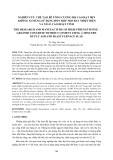

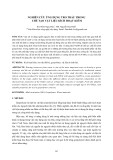

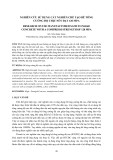


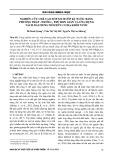
![Bài giảng Quản lý vận hành và bảo trì công trình xây dựng [chuẩn nhất]](https://cdn.tailieu.vn/images/document/thumbnail/2025/20251006/agonars97/135x160/30881759736164.jpg)


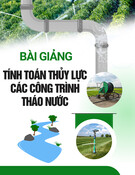
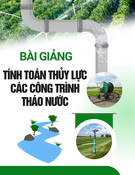
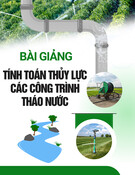
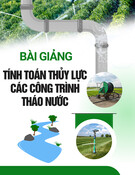
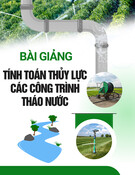
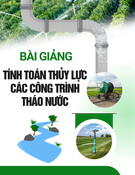

![Ngân hàng câu hỏi trắc nghiệm Sức bền vật liệu 1: [Mô tả/Định tính Thêm để Tăng CTR]](https://cdn.tailieu.vn/images/document/thumbnail/2025/20250920/kimphuong1001/135x160/6851758357416.jpg)


![Trắc nghiệm Kinh tế xây dựng [chuẩn nhất]](https://cdn.tailieu.vn/images/document/thumbnail/2025/20250920/kimphuong1001/135x160/32781758338877.jpg)

